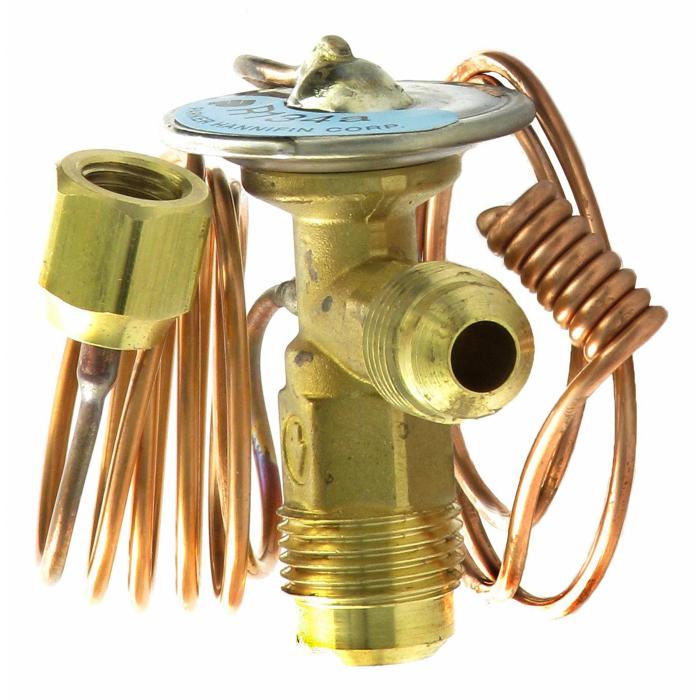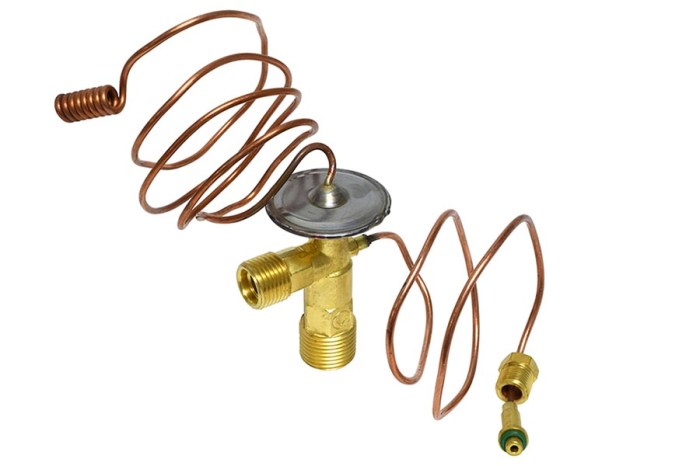Externally equalized thermostatic expansion valves stand as unsung heroes in the realm of refrigeration, meticulously regulating refrigerant flow to optimize system performance. Join us as we delve into their intricate workings, exploring their advantages, applications, and the nuances of their selection, installation, and maintenance.
These valves are meticulously engineered to respond to evaporator conditions, ensuring optimal refrigerant flow for efficient cooling or heating. Their design incorporates a sensing bulb and diaphragm, which work in concert to modulate the valve opening, precisely controlling the refrigerant flow.
Externally Equalized Thermostatic Expansion Valve Overview

An externally equalized thermostatic expansion valve (TXV) is a device used in refrigeration systems to regulate the flow of refrigerant into the evaporator. It ensures optimal cooling performance by maintaining the desired superheat at the evaporator outlet, regardless of load variations.
The key components of an externally equalized TXV include the valve body, diaphragm, sensing bulb, and capillary tube. The sensing bulb is located at the evaporator outlet and measures the temperature of the refrigerant. The diaphragm is located inside the valve body and responds to changes in the sensing bulb temperature.
Working Principle
The working principle of an externally equalized TXV relies on the interaction between the sensing bulb, diaphragm, and valve stem. When the refrigerant temperature at the evaporator outlet increases, the sensing bulb expands, causing the diaphragm to move and open the valve.
This allows more refrigerant to flow into the evaporator, increasing the cooling capacity.
Conversely, when the refrigerant temperature at the evaporator outlet decreases, the sensing bulb contracts, causing the diaphragm to move and close the valve. This reduces the flow of refrigerant into the evaporator, decreasing the cooling capacity.
Advantages and Disadvantages, Externally equalized thermostatic expansion valve
Advantages of using an externally equalized TXV include:
- Precise control of superheat, resulting in improved system efficiency and reduced energy consumption.
- Self-adjusting operation, eliminating the need for manual adjustments.
- Compact size and ease of installation.
Disadvantages of using an externally equalized TXV include:
- Potential for hunting or instability under certain operating conditions.
- Sensitivity to changes in sensing bulb position and refrigerant charge.
- Air conditioning systems
- Refrigeration systems in supermarkets and food processing plants
- Industrial refrigeration systems
- Refrigerant type and capacity
- Evaporator load and operating conditions
- Desired superheat
- Fine-tuning the valve settings to achieve the desired superheat.
- Monitoring valve performance and adjusting as needed.
- Using a digital thermometer to accurately measure superheat.
- Hunting or instability
- Leaking
- Clogged sensing bulb
- Electronic control valves
- Variable capacity valves
- Self-tuning valves
Applications
Externally equalized TXVs are commonly used in refrigeration systems where precise control of superheat is critical, such as:
Selection and Sizing
When selecting an externally equalized TXV, the following factors should be considered:
The valve should be sized appropriately to ensure proper refrigerant flow and control.
Installation and Maintenance
Proper installation of an externally equalized TXV is essential for optimal performance. The sensing bulb should be securely attached to the evaporator outlet and insulated to prevent heat transfer from the surroundings.
Regular maintenance includes checking the valve for leaks, cleaning the sensing bulb, and ensuring proper refrigerant charge.
Performance Optimization
To optimize the performance of an externally equalized TXV, the following techniques can be employed:
Troubleshooting and Repair
Common problems associated with externally equalized TXVs include:
Troubleshooting procedures involve checking the valve settings, refrigerant charge, and sensing bulb condition.
Advancements and Future Trends
Recent advancements in externally equalized TXV technology include:
These advancements are improving the performance and efficiency of refrigeration systems.
Question Bank: Externally Equalized Thermostatic Expansion Valve
What is the primary function of an externally equalized thermostatic expansion valve?
To regulate refrigerant flow based on evaporator conditions, ensuring optimal cooling or heating performance.
What are the key components of an externally equalized thermostatic expansion valve?
Sensing bulb, diaphragm, valve seat, and valve stem.
What are the advantages of using an externally equalized thermostatic expansion valve?
Precise refrigerant control, improved system efficiency, reduced energy consumption, and enhanced cooling capacity.

